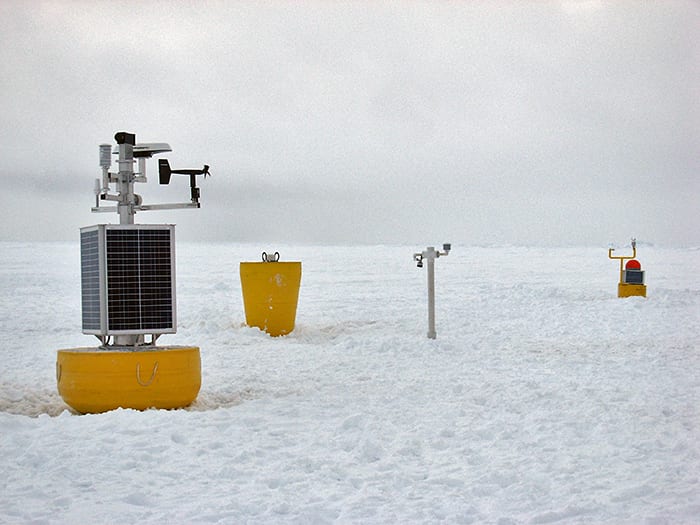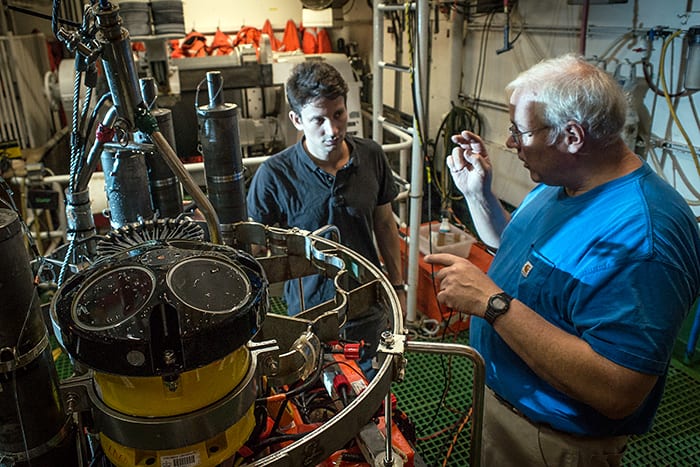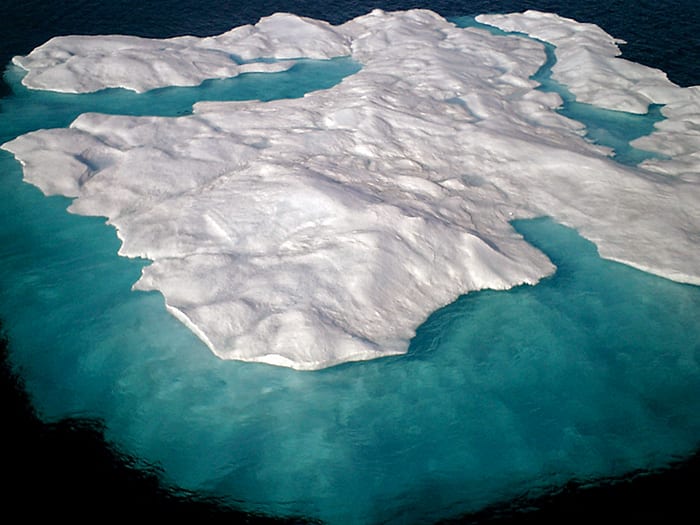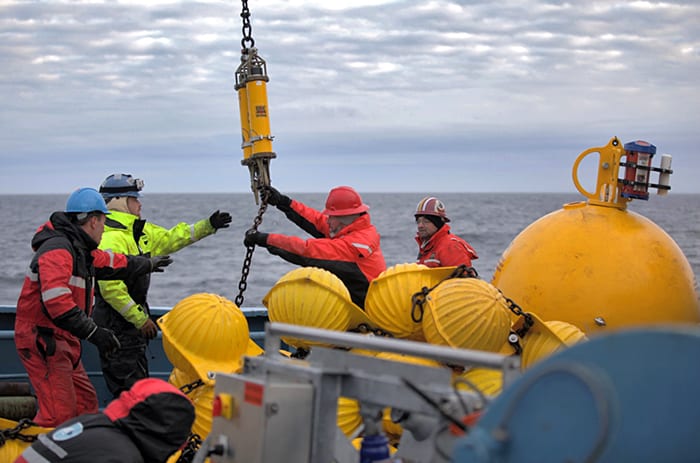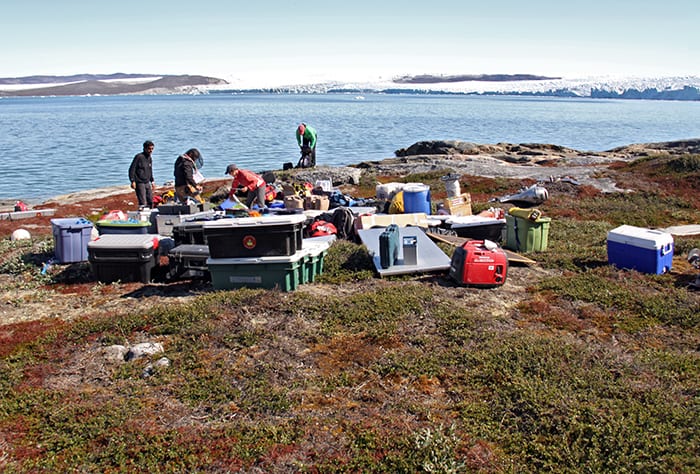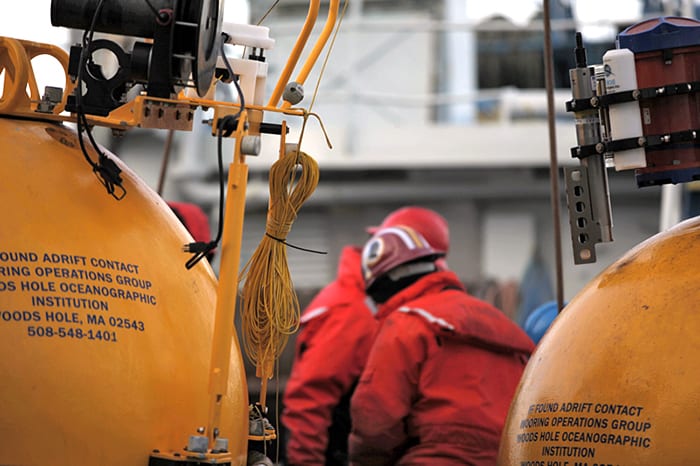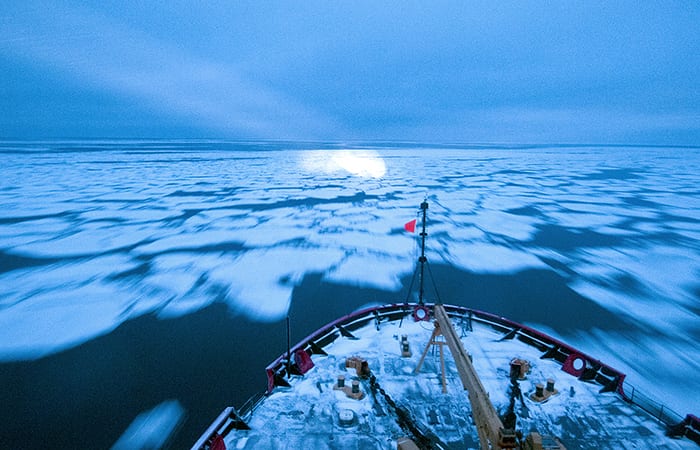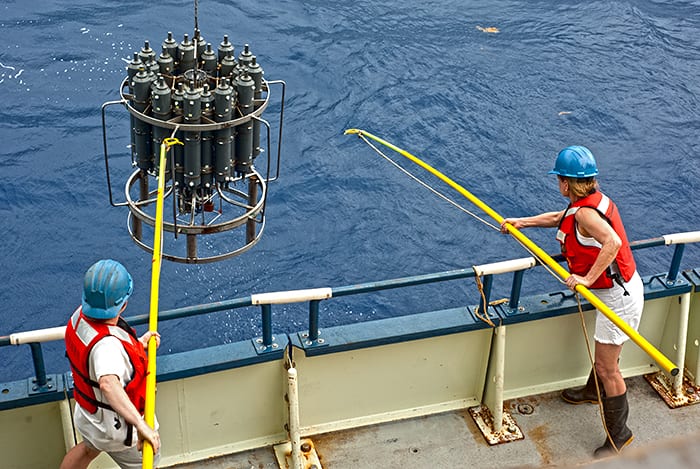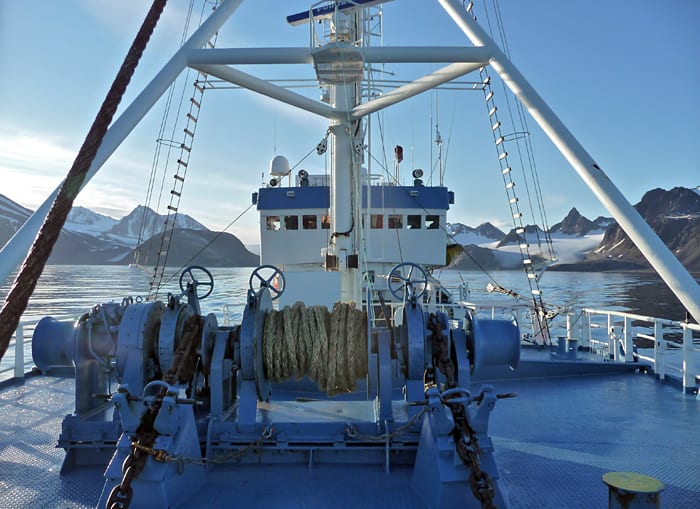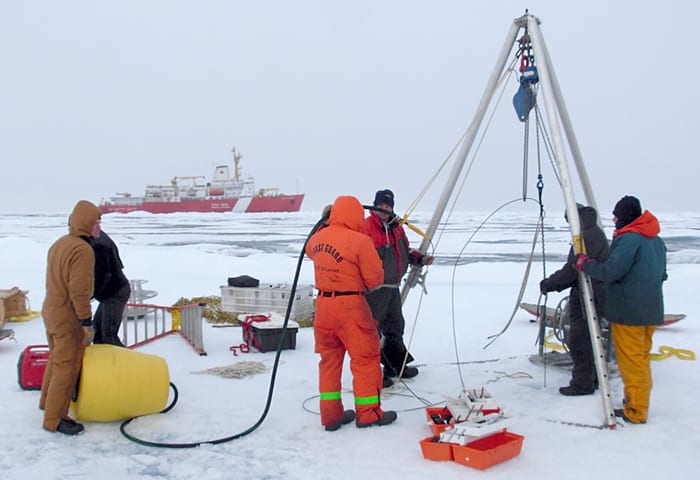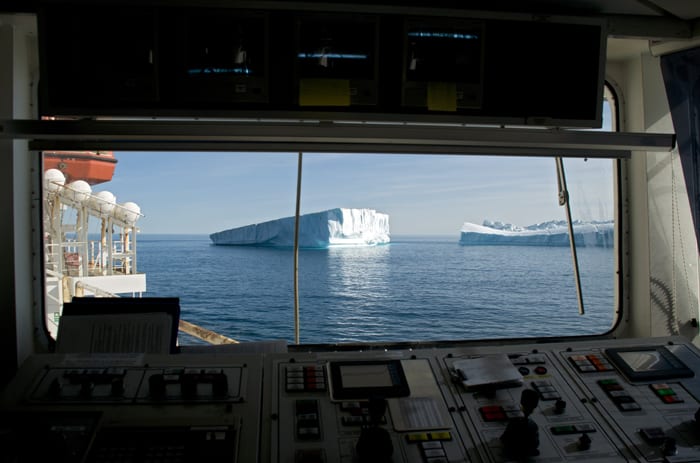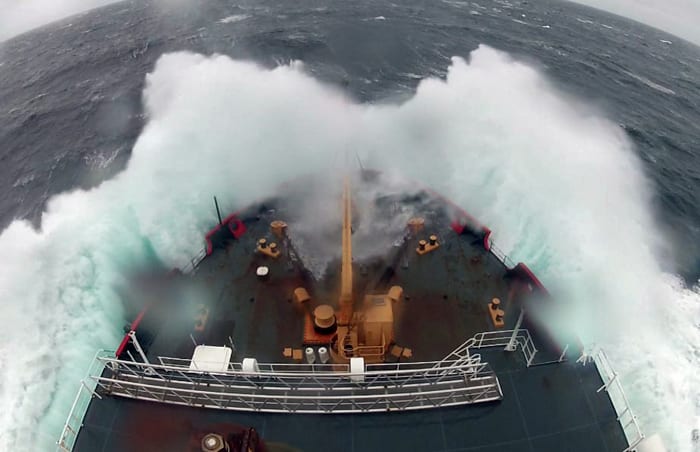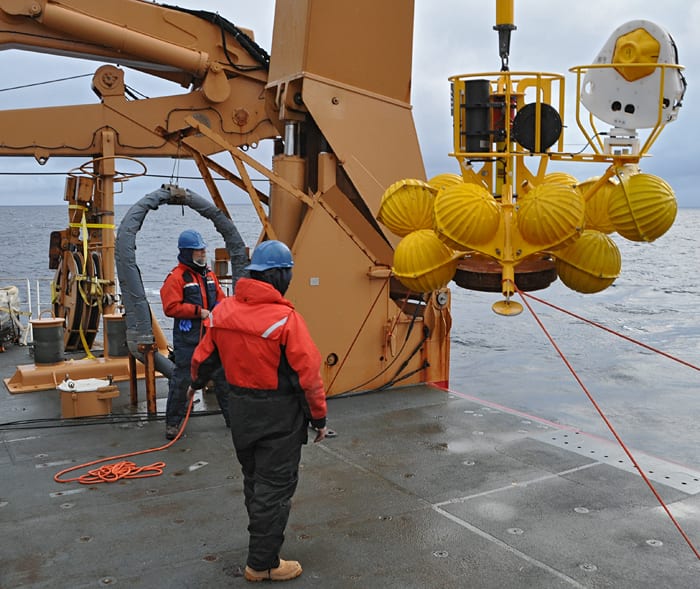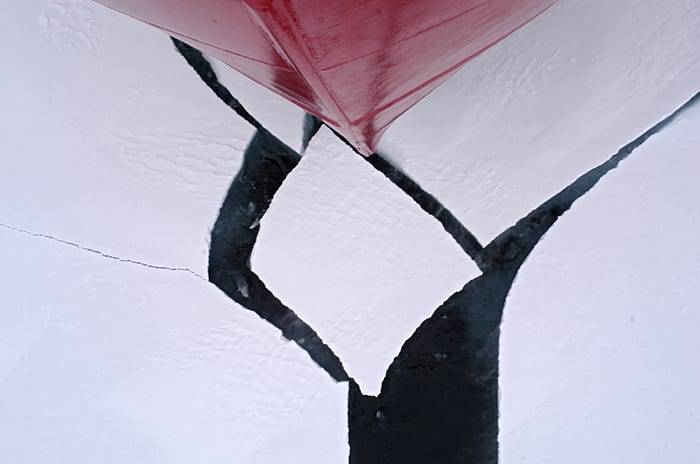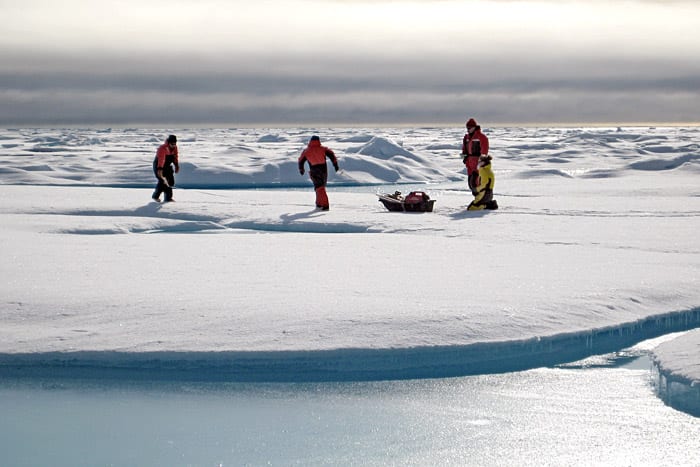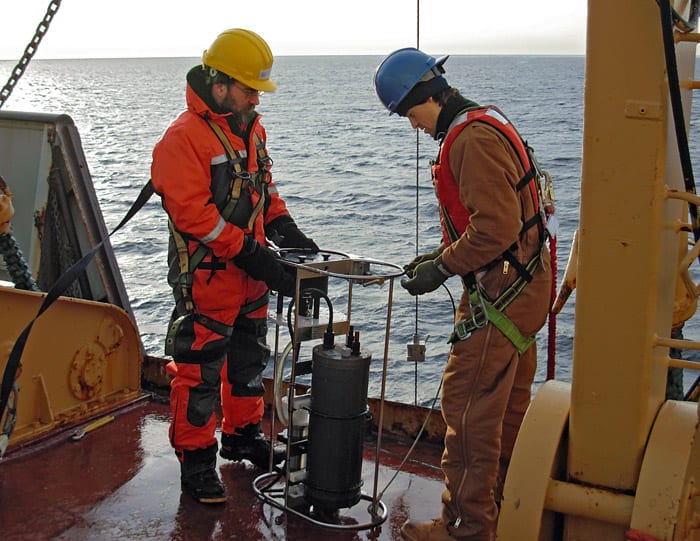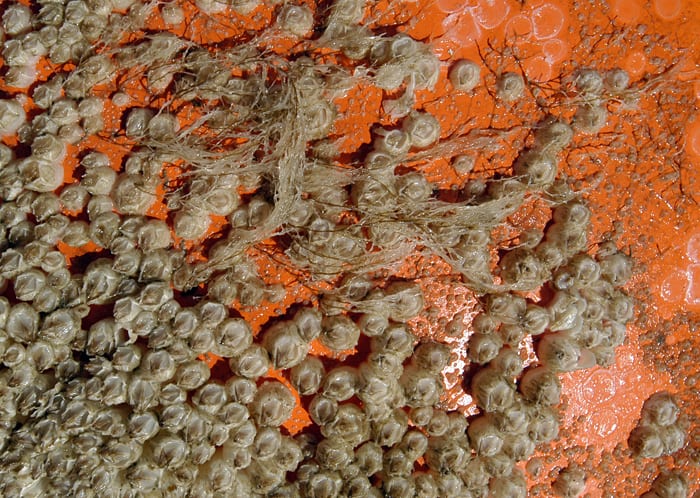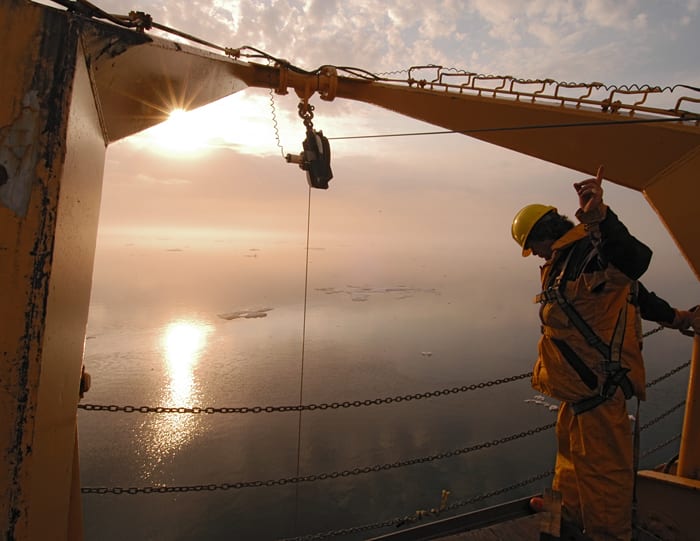Multimedia Items
Ice Base
Data from the ice-covered Arctic Ocean are hard to come by because the region is extremely remote and the environment hostile. Scientists and engineers are overcoming these challenges by deploying…
Read MoreClass In Session
WHOI engineer Marshall Swartz (right) instructs Louis Clement, a post-doctoral scientist at the Lamont-Doherty Earth Observatory, on the technical intricacies of a CTD rosette equipped with a lowered acoustic doppler current profiler (ADCP). The two were…
Read MoreStairway to the Deep
A special, thick-walled tank permits guest investigator Sheng-Qi Zhou from the South China Sea Institute of Oceanology in Guangzhou, China, to observe mixing processes under the pressures experienced deep in the…
Read MoreNo Swimming
A floating piece of ice in the Arctic Ocean matches the shades of white-sand beaches in tropical water, but the temperature would be quite a shock to anyone who was…
Read MoreData Recovery
Kjetil Vaage, of the University of Bergen, helps WHOI mooring technicians Jim Ryder and Dan Torres recover the dual acoustic release component of a mooring line. During a cruise to…
Read MoreMaking Camp
Researchers collect gear delivered by helicopter at a site in West Greenland. The expedition led by WHOI oceanographer Fiamma Straneo and glaciologist Sarah Das in the summer of 2013 was…
Read MoreNorthern Moorings
In September 2013, WHOI scientist Bob Pickart and colleagues traveled to to the Arctic aboard the Norwegian ship Lance to study ocean circulation in the far north. The group retrieved…
Read MoreA Decade of Change
The U.S. Coast Guard icebreaker Healy steams through “pancake” sea ice in the western Arctic Ocean in October 2013. WHOI physical oceanographer Bob Pickart is leading the cruise to complete…
Read MoreAll Aboard
Postdoctoral scholar Liz Douglass (left) and chief scientist Ruth Curry recover a CTD rosette during a cruise aboard RV Knorr in the North Atlantic in 2011. The cruise was part…
Read MoreA First Time for Everything
The R/V Lance is an old sealing vessel that was converted by the Norwegian Polar Institute to support oceanographic research. Its design requires moorings to be deployed off the ship’s…
Read MoreIcy Outpost
Researchers from WHOI and crew from the Canadian icebreaker Louis S. St. Laurent prepare to deploy an ice-tethered micro-mooring (ITM) on a large ice floe in the Canada Basin in…
Read MoreSafe Passage
Icebergs were a common sight around the British icebreaker James Clark Ross during a 30-day summer research cruise along Greenland’s east coast to the high-Arctic island of Spitsbergen. The expedtion, led…
Read MoreBi-coastal Battering
While Hurricane Sandy was lashing the East Coast, a low-pressure system was making life difficult for the scientists and crew of the U.S. Coast Guard Cutter Healy. The team was…
Read MoreSmooth Sailing
In August 2012, the US Coast Guard Cutter Healy sailed through unusually light sea ice across Hanna Shoal in the norhtern Chukchi Sea. The cruise was the first in the…
Read MoreWorking Under Ice
To work under Arctic ice and in rough seas, researchers rely on bright, buoyant, and tough equipment. In fall 2011, crew and researchers aboard the United States Coast Guard icebreaker…
Read MoreBreaking the Ice
The U.S. Coast Guard Cutter Healy plows a path through ice in the Beaufort Sea. Evidence of Earth’s changing climate is especially visible in the Arctic, making it an important area…
Read MoreCarbon on Ice
A team of researchers sample ice and snow from an ice floe in the Canada Basin, an area northwest of the Canadian coast, during a 2008 expedition to measure carbon…
Read MoreSurveying Carbon
Mike Dempsey (left) of the Canadian Institute of Ocean Sciences and MIT/WHOI Joint Program student David Griffith recover a pump used to collect samples during a 2008 expedition in the…
Read MoreBarnacle Buoy
Instruments, buoys, and rigging lines placed in the sea attract a wide variety of organisms. After 13 months in the Chukchi Sea north of Alaska, this orange float sported a…
Read MoreNight Shift
With the nighttime Arctic sun as a backdrop, Hugh Maclean of Canada’s Institute of Ocean Sciences signals to the winch operator during deployment of a CTD (conductivity-temperature-depth) instrument in the…
Read More
